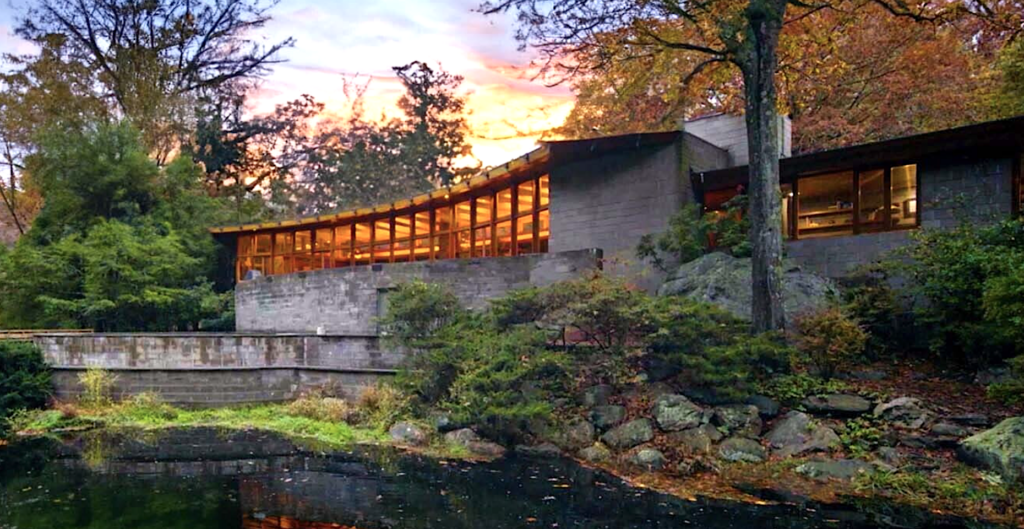A Beautiful Visual Tour of Tirranna, One of Frank Lloyd Wright’s Remarkable, Final Creations

“When I first encountered Wright’s work as an eight-year-old boy, it was the space and the light that got me all excited,” says Stuart Graff in the Architectural Digest video above. “I now understand why that gives us the feeling that it does, why we feel different in a Frank Lloyd Wright house. That’s because he uses space and light to create this sense of intimacy with the world around us.” As luck would have it, Graff has grown up to become president and CEO of the Frank Lloyd Wright Foundation, and it is in that capacity that he leads us through one of the renowned American architect’s last projects, a 1955 house along the Noroton River in New Canaan, Connecticut called Tirranna.
“While Tirranna was being built, Wright was in New York City working on his largest commission, the Guggenheim Museum,” says Graff. Also known as the Rayward–Shepherd House, Tirranna is certainly less widely known than the Guggenheim, and indeed, less widely known than some of Wright’s other residential work.
But as his private houses go, Tiranna’s “setting rivals even perhaps Wright’s most famous work, Fallingwater, in the way that house engages nature.” Built along a curve that “follows the movement of the sun through the day” and textured with contrasting concrete block and Philippine mahogany — not to mention plenty of glass through which to take in the landscape outside — it stands as a rich example of late Wright.
And rich is what you’d better be if you want to live it: according to a notice published in Architectural Digest, Tirranna went on the market last year for an asking price of $8 million. Its 7,000 square feet make it one of Wright’s “largest and most expansive residential projects”; the “low-slung main home is designed in a hemicycle style — a uniquely Wright shape — and features seven bedrooms, eight bathrooms, a rooftop observatory, and a wine cellar that has been converted into a bomb shelter.” It even boasts the distinction of Wright himself having stayed there, during the time he was still working on the Guggenheim. For a deep-pocketed enthusiast of twentieth-century American architecture, there could hardly be a more intriguing prospect in New Canaan — as least since the Glass House isn’t for sale.
Related content:
What Frank Lloyd Wright’s Unusual Windows Tell Us About His Architectural Genius
130+ Photographs of Frank Lloyd Wright’s Masterpiece Fallingwater
When Frank Lloyd Wright Designed a Doghouse, His Smallest Architectural Creation (1956)
Based in Seoul, Colin Marshall writes and broadcasts on cities, language, and culture. His projects include the Substack newsletter Books on Cities, the book The Stateless City: a Walk through 21st-Century Los Angeles and the video series The City in Cinema. Follow him on Twitter at @colinmarshall or on Facebook.


